Solar Mobile Phone Charger Case Study
Question
Task:
LO1. Conduct the preliminary stages involved in the creation of an engineering
Research project.
LO2. Examine the analytical techniques used to work on all stages of the project
and
Strategies required overcoming the challenges involved in a research project.
LO3. Reflect on the impact the research experience could have in enhancing
Personal or group performance within an engineering context.
LO4. Explore the communication approach used for the preparation and
Presentation of the research project’s outcomes.
Answer
LO1
P1 Research questions and hypothesis
Q1: Will solar phone chargers be available easily in every shop?
Q2: what are the advantages to produce solar phone charger and how will it work?
Q3: Are there any risk involved in producing this charger?
Q4: Is it possible to produce and deliver the required number of chargers within the short span of COVID-19 pandemic lockdown situation?
The research hypothesis states the possible outcome of the research on the manufacturing of solar chargers of mobile phones. It states whether the research is possible based on the population and also defines differences among variables.
P2 Project aims, objectives and rationale
Aims:
The project aims to show different ways through which power can be supplied to mobile phones and one of them is solar power. The project aims to show ways to develop a suitable source of power, other than electricity and generators to charge. The Abia diaspora of the UK is the target position since they are in the tropics and has a good supply of sunshine. The project aims to find out different ways to mitigate risks of this charger development and understand the advantage of a solar charger.
Objectives:
- To know the need of solar charger in places where there is less supply of electricity
- To understand the most suitable way to save electricity
- To find out different specifications of the project and know the ways through which solar charger can be handed to students
- To evaluate different risks of this product and ways to mitigate the risks in doing so
- To recommend a suitable source to deal with this problem during COVID-19 pandemic when students need online classes
Rationale:
The main issue of the study is less supply of electricity in the rural areas of Abia diaspora in the UK and it is occurring owing to massive all-time usage of electricity during the lockdown period. Students are not able to attend schools and colleges and they need to attain online classes. However, owing to power shortage in the area there is a major setback in online teaching classes. The Abia State government is also very upset since their plan to disseminate online class is in vain now. The state has requested for a suitable solution as a result of which the electronic company has come up with the idea of solar charger for mobile phones. It is very important to mitigate all issues during a pandemic is the noblest of all jobs and the electronic company is trying to deal with the situation along with the state government.
M1 project specification and project risks
It is very important to understand the need for the development of a solar charger and the deliverables for producing the equipment. Finest detail about the project is to be known and properly measurable. The project involves the manufacturing of a solar charger for facilitating mobile phones for online classes. The critical success factors involve completing the project within the deadline (COVID-19 pandemic lockdown) and with employee satisfaction. The development and implementation of solar-powered mobile chargers require effective design and functionality. The solar chargers along with solar project chain will be a diagnostic tool that Abia state government can utilize to benchmark their progress. It will be accompanied by fulfilling the conditions for a sustainable solar program.There should be a Global e-Tendering Platform that will enable the state government to implement a competitive process by selecting independent power producers through a robust mannerfor charging the solar mobile battery (Uciteli, et al. 2017). The oriented project specifications willanalyses the specific questions, like accounting the needs and accountability requirements to develop a solar, with the evaluation of oriented methodby favouring technical qualities of the process of the project.The objectives if a testing program of the designs that will standardize the project. The projecttesting incorporates assessed performance through performing a controlled experiment with the contrast of the outcomes elucidated for the solar project. The fundamental reason for this has to be with risks associated with the implementation of solar-powered chargers. The project aims to consider the risks in considering of project of making sustainable solar-powered mobile chargers.
D1 Justification of the research rationale
Currently, both rural and urban areas of Abia state of Nigeria are suffering from power outage issues. In the urban areas, power cut-outs are quite common and in rural areas, some of the places are still out of the grid supply areas. This means that students from this area do not have the privilege to utilize their phones due to lack of facility of charging. As the Covid-19 pandemic, online classes became a major educational method. Providing solar mobile chargers to these students will solve the power outage issue and help them to continue their online classes through WhatsApp (Gunawan et al. 2020).
LO2
P3 Literature review
Solar-powered mobile chargers are the need and source as a form of renewable energy. The Abian state government is aiming at concentrating on developing solar charger through the power source of solar energy radiated from solar energy. Electric generation utilizing solar power has been a need for development in Abia state government. The students particularly facing the shortage of electric supply form power grid can better use solar-powered chargers for eradicating the issues in their study programs. Development of solar cells in Abia is particular interest as it is an ideal sour e of power generation. The research will be focusing on developing a solar mobile charger in Abia. Due to the current situation of uncovered supply of electrical energy, it is emerging some problems. The research will investigate to discuss the solution of making a mobile charger for acting as a support for electric supply to mobile phones. We will analyze both the environmental and economical benefits for the implementation of solar energy powered battery charger for mobile phones(Jenniches, 2018). The use of a solar-powered battery charger can be a remarkable source of with clean, ensuring zero-emission renewable sources of naturally charged devices. It can be used in the devices as well using maximum domestic use of solar energy. The potential energy along with risks is alsotaking part in the development of developing solar projects. The incentive schemes and rebates can make use of solar-powered battery on the tax of government can make solar batteries financially easy. The literature approach to missing adequate targets in executing the completion of solar projects in the area of Abia has led to criticism. The literature theories on the contracting, consulting and another policy framing in regards to solar projects have been founded sluggish. The development for powering the mobile batteries in Abia has as compared to other regions through solar energy has been slow. Risks associated with the solar-powered mobile battery charger also associates risks such as technological risks like expected time issues and joint venture. The environmental risk of protection issues regarding biodiversity, environmental legislation. The problem of obtaining certifications and clearances form the state government of Abia may disturb the solar project. The chief failure in the attainment of financial closure can inflate the supposed funds for executing the solar-powered project if it does not get the necessary approvals. The literature theories relate that solar energy has advantages over many other renewable sources of energy taking wind and water power. Solar power will be generated through solar panels that will not require any big mechanical parts like wind turbines. The mechanical parts can break down causing maintenance issues and it can also be quite noisy. Both the issues will be virtually non-exist able regarding solar panels. This project will aim at in gathering solar power and storing it in the electric battery through photovoltaic cells (Brunet, et al. 2018). The utilization of a solar-powered battery with multiple low-voltage devices can be efficiently charged. The charge in the battery can also be displayed on an LCD by the help of a micro-controller.
P4 research methodology and approaches
Introduction
The research methodology is a crucial part of every research which states how the research is going to be conducted. The methodology part of the research describes recharge related factors like research approach, philosophy, design, strategy, sampling method, data collection method and others. In this research, the qualitative and quantitative data both have been analysed by which it can fulfil the research objectives completely.
Research philosophy
Research philosophy has been used to determine the validity of the research objectives with research requirements. It is categorized into five types including interpretivism, positivism, post-positivism, realism and pragmatism. For the sake of this study, positivism philosophy has been used as it offers objectivity and validity to the overall research. Different precise methods, objectives and statistical data have been used for fulfilling the purpose of positivism philosophy. In context to the solar mobile charger in context to the logical thinking, logical interpretation has been implemented to form certain knowledge from the existing resources (Dougherty et al. 2019). Using positivism philosophy further proven to be useful for using the natural phenomenon along with their relations and properties. Positive facts or verified data has been identified through empirical evidence thus developing an individual perspective of the development of solar mobile charger.

Figure 3.2: Research philosophy
(Source: Dougherty et al. 2019)
Research design
Research design has been proven to be useful for showing the research aims and objectives in a clear and directive manner. The research has been identified with different designs to fulfil the research objectives by which a positive outcome can be identified. It has been categorized into three types, explanatory, exploratory and descriptive research designs. In the context of this research, descriptive design has been chosen. The descriptive design has been evidenced for identifying every factor of the research objectives and deliverables (Schoonenboom and Johnson, 2017). In context to the case scenario, using the descriptive research design and empirical value has been identified through developing every individual circumstances and factor, which can impact on the project objectives. Using deductive research design has been implemented as per the existing theory and models to develop hypotheses and identified the reasoning process to develop the knowledge for choosing the theory behind it.
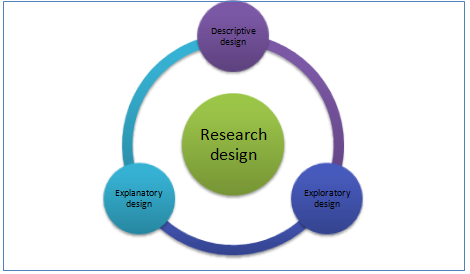
Figure: Research design
(Source: )
Research approach
The research approach has been identified for developing a clear procedure or a concept plan through using detailed methods of data interpretation, collection and analysis. Research design has been used for identifying whether the overall research is one the right track or not. The research approach has been categorized into two types, inductive and deductive. In this research process, the deductive approach has been used as it offers a research strategy by which the theories and models and its empirical outcomes can be identified (Bell et al. 2018). The deductive approach has been aimed for testing the theory or models which are used to fulfil the research objective above. In context to the case scenario, a deductive approach has been used for identifying whether the used theory and models have been offered the required data interpretation to develop the conceptual plan. As a result, solar mobile charger development has fulfilled all the research objectives by developing the hypothesis by data interpretation.
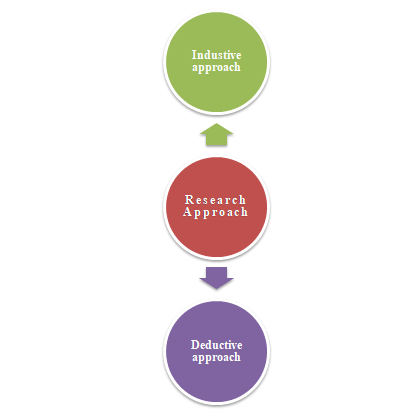
Figure: Research approach
(Source: Bell et al. 2018)
Research strategy
Research strategy has played a significant role in conducting the overall research project. Research strategy has been used to guide for planning, executing, controlling, monitoring and finishing the entire project. Research strategy has been categorized into four different types which are action research, online survey, interview and solar mobile phone charger case study. Within this research, solar mobile phone charger case study and online survey and action research strategy have been chosen to be effective (Flick, 2018). Online surveys have been chosen to gather valid and effective data which can fulfil the research aims and objectives. The solar mobile phone charger case study has been chosen as the solar mobile charger has been evidenced and provided in the assessment. Action research has been chosen as the critical analysis for testing the hypothesis in a real-world framework is identified.
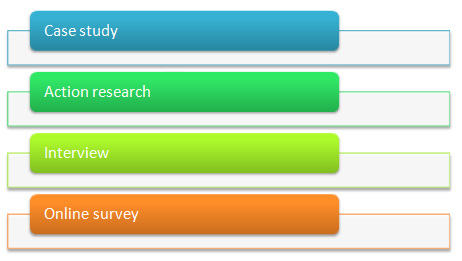
Figure: Research approach
(Source: Flick, 2018)
Data collection method and tools
Data collection has been considered to play a significant role in fulfilling the research aims and objectives through enough evidence. In this study, a survey has been chosen for primary quantitative data collection methods and online research as a secondary qualitative data collection method. Different real-time data related to solar mobile charger has been gathered to showcase the primary data. During the survey, close-ended questions have been asked to the students which are considered to be the primary quantitative data collection tool. During the online research, all the online sources which are used for conducting this research as trustable sources (Fuschet al. 2015). All the online journals and articles used for this research are all recent to make sure the collected data and information are updated. To understand the recent scenario of a power outage in the Abia state of Nigeria, online news articles are also used within this research.
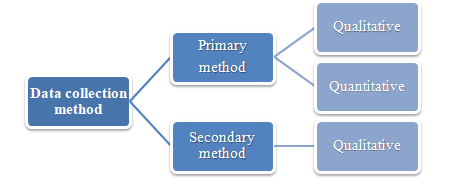
Figure: Data collection method
(Source: Fuschet al. 2015)
Sampling
Sampling has been provided for a statistical outcome of large-sized population characteristics from an individual perspective. It has been categorized into two different types, probabilistic and non-probabilistic types. For the sake of this research, a non-probabilistic sampling method has been chosen. After that, different journals and articles have been chosen randomly as per the research requirements for developing the solar mobile charger. Hence, random sampling has been chosen (Wang et al. 2015).To conduct the survey, a total of 50 students of Abia state of Nigeria mainly who are suffering from mobile powering and charging issues in both rural as well as urban areas.
Ethical consideration
Ethical considerations are essential to be followed for maintaining some norms and guidelines during the survey operation. During the survey analysis, no individual student has been harmed and all of their data has been kept confidential. During the survey analysis, no personal questions have been asked to the participants. During the survey analysis, the Data Protection Act 2018 has been followed through to provide confidentiality to the participants of the survey analysis. Through the survey analysis, ethical behaviour also has been maintained from the researcher’s end to create a trust.
M2 Strategies to mitigate the risks involved in the literature review
Sustainable Solar devices: The development of supporting sustainable and renewable roadmaps concentrating on medium-term focuses depending upon sound planning and resource evaluations. Also providing compromised climate finance mixed with technical support and development for ensuring thatAbiawill have a rightauthorizing environment to decrease area risk (Hilorme, et al. 2019).
Transparent generating: The support of selected private sector investors and technical support comprehensively and transparently for addressing the risk of area and project.
Viable Risk Mitigation Coverage: Developing of feasible risk mitigation for covering the coverage of residual project risks. Itaims at solar (grid and off-grid) and storage implement financed and managed by private investors. Committed financing should be raised for supporting the technical assistance program along with investment lending and risk mitigation for covering the implementation of roadmaps(Steckel, and Jakob, 2018). Favourable climate finance will be expected to play a key role through new contribution for grid infrastructure development and up-gradation of solar parks. To support unorthodoxcoverage ofrisk mitigation by the capitalization of resources of development finance institutions. The Sustainable Solar assessing rule: The report details should be taken in each step for the development of an effective program that should highlight the links between every step. There are other critical issues also to be considered to ensure an integrated approach.
M3 Discussion of merits, limitations and data analysis
The data analysis is taken into consideration for depicting the results and analysing the results. Primary data analysis has the merits to focus on how the data is interpreted as per accomplishing research objectives. It has limitations that the data analysis is concluded from the primary resources only. Any kind of secondary sources is not taken to compare the research findings on a solar mobile phone charger. Primary survey of the students living in Abia, UK has been taken for the survey. 50 students are taken in rural areas to execute the survey. It is equal for bringing effective results in concluding the study.
Survey:
Q1. Gender
|
Option |
Responses |
Percentage |
Total responses |
|
Male |
21 |
42% |
50 |
|
Female |
29 |
58% |
50 |
Table 1: Gender
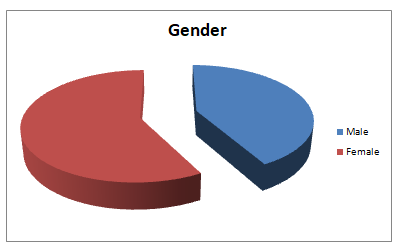
Figure 1: Gender
(Source: Created by author)
For the survey, there are 42% male respondents and 58% female respondents. It can be said that the students for the survey are more or less equal in gender diversity as it would help get diverse responses.
Q2. In which class do you read?
|
Option |
Responses |
Percentage |
Total responses |
|
Below class10 |
12 |
24% |
50 |
|
Class 10 to 12 |
30 |
60% |
50 |
|
In college |
8 |
16% |
50 |
|
Higher study |
0 |
0% |
50 |
Table 2: Reading class
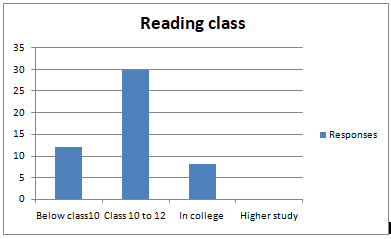
Figure 2: Reading class
(Source: Created by author)
Most of the respondents read in class 10 to 12. 60% respondents read in class 10 to 12. 24% respondents read below than the class 10 and 15% respondents read in college. From this analysis, it is found that the school students need more power backup regarding introducing solar mobile phone chargers.
Q3. In the lockdown, do you face any problems due to power cuts?
|
Option |
Responses |
Percentage |
Total responses |
|
Yes |
49 |
98% |
50 |
|
No |
0 |
0% |
50 |
|
Sometimes |
1 |
2% |
50 |
Table 3: problems due to power cuts
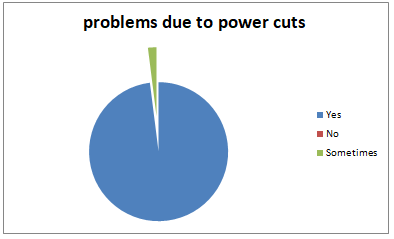
Figure 3: problems due to power cuts
(Source: Created by author)
It can be said that 98% of respondents are facing problems due to frequent power cuts. It is clear that most of the students are facing problems due to the frequent power cuts and they need some solid alternatives to continue their education in the lockdown situation. It is important to focus on developing suitable sources of power so that mobile phones can be charged easily and it can be the best alternative.
Q4. How frequently do you face problems regarding electricity?
|
Option |
Responses |
Percentage |
Total responses |
|
One a day |
2 |
4% |
50 |
|
Twice a day |
10 |
20% |
50 |
|
More than 2 times |
38 |
76% |
50 |
Table 4: Frequency of power cut
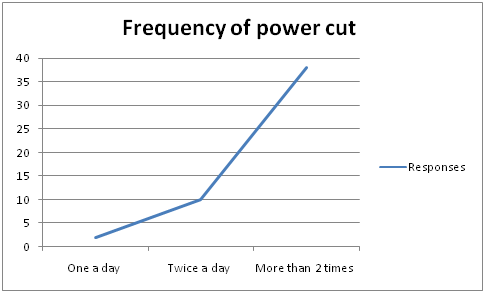
Figure 4: Frequency of power cut
(Source: Created by author)
From the above figure, it can be said that there are problems regarding electricity. The power cuts occur more than 2 times a day. 76% of respondents think that power cuts occur more than two times a day. It can be said that it is a critical problem that the Abia government should focus on.
Q5. Do you need any alternatives?
|
Option |
Responses |
Percentage |
Total responses |
|
Yes |
49 |
98% |
50 |
|
No |
0 |
0% |
50 |
|
Maybe |
1 |
2% |
50 |
Table 5: Alternatives
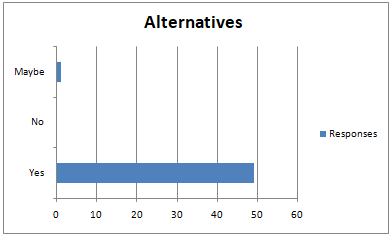
Figure 5: Alternatives
(Source: Created by author)
From the above table, it can be said that 98% of respondents want alternatives to regular electricity to charge their mobile phones. Power cut and electricity problems are critical and consistent in the area of Abia diaspora. It is found that mobile phones are important that the important lessons and study materials are delivered via WhatsApp to the students. Alternate power grids in urban areas are important daily.
Q6. Are you aware of solar mobile phone charger?
|
Option |
Responses |
Percentage |
Total responses |
|
Yes |
50 |
100% |
50 |
|
No |
0 |
0% |
50 |
|
Maybe |
0 |
0% |
50 |
Table 6: Awareness of solar mobile phone charger
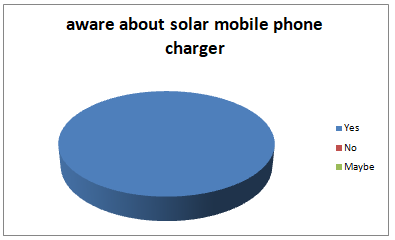
Figure 6: Awareness of solar mobile phone charger
(Source: Created by author)
From the above figure, it is clear that all of the respondents are aware that solar mobile phone charger is the best alternative to the electricity supply. It is significant to establish awareness to use solar mobile phone charger as the best alternative in Abia State. Rural areas must continue the education delivery effectively to all the students of the state. it is mandatory to know the basic requirements and effectivity of using solar mobile
Q7. Is a solar mobile phone charger needed to be supplied to each family for education purposes by the Abia government?
|
Option |
Responses |
Percentage |
Total responses |
|
Strongly agreed |
32 |
64% |
50 |
|
Agreed |
15 |
30% |
50 |
|
Neutral |
2 |
4% |
50 |
|
Disagreed |
1 |
2% |
50 |
|
Strongly disagreed |
0 |
0% |
50 |
Table 7: solar mobile phone charger needed to be supplied to each family
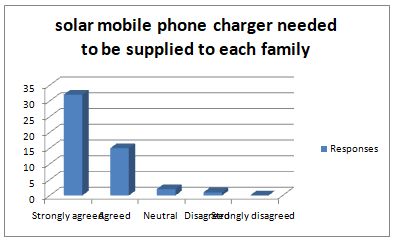
Figure 7: solar mobile phone charger needed to be supplied to each family
(Source: Created by author)
It can be said that 64% strongly agreed that solar mobile phone charger is needed to be supplied to each family in the area. Most of the respondents think that it is important like other demand like food and clothing. It would be effective to continue the education system effectively. the government should take the initiatives to continue the basic education of the school and college students of the local areas.
Q8. Solar systems can be helpful to produce solar mobile phone chargers.
|
Option |
Responses |
Percentage |
Total responses |
|
Strongly agreed |
40 |
80% |
50 |
|
Agreed |
8 |
16% |
50 |
|
Neutral |
2 |
4% |
50 |
|
Disagreed |
0 |
0% |
50 |
|
Strongly disagreed |
0 |
0% |
50 |
Table 8: Solar systems can be helpful
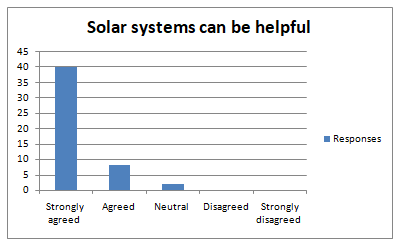
Figure 8: Solar systems can be helpful
(Source: Created by author)
It can be commented that solar systems can be effective to introduce mobile phone charges daily. The sun can be considered as the main source of power supply as an alternative to electricity to charge mobile phones. 80% of respondents agreed strongly that solar systems can help introduce mobile phone chargers. It can be said that solar systems are used to charge mobiles for the remote local areas with power grids.
D3 Critical analysis of literature review and data analysis
This project has evaluated the economical and environmental side of the project form solar energy implementation. This will include the relevant cost of solar energy installation for powering batteries, advantages gained of solar batteries to economics. The energy-producing sector of the state, its problems generating environmental issues, private sector participation, and criticism of efficiencies in energy are a source of the problem. The concern for implementation of solar-powered chargers instead of other electrical sources, and improvement in the state of electric power grid required to sort. The environmental concerns along with other risks are to be mitigated developing a well efficient solution.
The data analysis is developed for engaging how it can be effective to introduce the primary sources of survey results. The data analysis indicates the consideration of the data analysis that is important to develop the responses and the diversities of answers to conclude the research. The data analysis highlights the study to execute solar mobile phone charges and its effectiveness in rural areas. It is found effectively by highlighting the problems of power cuts and the alternative of solar mobile phone chargers.
LO3
P5 Impact of experience to enhance personal or group performance
We have conducted a research project through an effective group with knowledgeable participants. The participants were well supported, and effective channel of communication was there between us with the synchronization plan. Every detailed matter and findings were evaluated with a decade of analysis. Everyparticipantwas able to handle out the different topics, research parts, communication tools and time. This synchronized process helps the research process to get along the finding plans in a well smooth way. The group performance is a good measurable way to evaluate any research project. I have found it so useful it will always make the way of making research in the future with the help of group performers. There is a flow of information and knowledge possessed by every individual that could help elevate the success of the research project. The skills possessed by others can be learned by others also which contribute to the project efficiently. There is a flow of structural framework that understands, manages and improves the effectiveness of group performances in carrying out the research project. The group performance always characterizes the processing system of information and data. This elevates the importance of group or team performance through cognitive team interaction, transitive memory and psychological safety of the team participants(Winkler, et al. 2019). My essential skills and knowledge's and effort have given me more favourablein career development.
M4 Benefits from research findings
To carry out a successful research project it lies in the approach of coming back again and again to the research question, data and methods. The research findings of the research project help in leading to new ideas, revisions, process and improvements. The sequential methods with a flexibility approach help to consider various approach and decisions. The well-conducted research project is very vital in the actual development of the project. The use of appropriate methodologies produces a result examined by the peers which can be replicated and produces the results (Badzi?ska, 2017). The effective research process can create knowledge that can be applied in real-world situations.The benefit in making solar power enable charger can effectively draw the importanceof the issues such as high cost, governmental and private investors back up. In turn, to implement solutions for making it cost-effective is an approach to the research findings. A research finding helps in addressing the proposed research study and helps in examining the study methods such as quantitative and qualitative approaches. The different viewpoints of the data, a method ensuring a comprehensive approach to the research project is very helpful for developing a successful study.
D3 Critical evaluation of experiences that enhance group or personal performance
Group and team performance necessitate the positive possibilities which provide the scope to follow a particular path in career development. Not only career development it also makes the process of a research project with the help of a team very easier to gain success in the real world also. Performing in a team always gives a solution to the issues that arise among the research findings and evaluation. The credibility of the performance of a team creates a memorable spirit through participant's mutual synchronization and cooperativeness.
LO4
P6 Types of communication approach
Research Projects come with many communication problems that sometimes lead to delays, frustration and conflict within research project discussion. This considers out the reason that there should be an effective utilization of efficient communication approaches as it suggested vital for the success of the project.
Communication methods are channels utilized for communication management as well as the effectiveness of project research. Communicative methods are a systematic approach which is generally used to share different types of information among the stakeholders of the project. The communication approaches aim to make sure that all idea and research opinion, knowledgegathered and relayed is not only been received but also understand by the participants in the research project. Also, the response and feedback from all the participants gathered to assess the necessary findings are measured with the effectiveness of different communicationapproaches.
There are many types of communication approaches used in project management and certainly, these include push and pull and interactive communication. All of the approachesallow the project research team leader and the other participations to get them organized and vital message throughout the groups and participants participatedalong with an extracted response from the participants effectively (Butt, et al. 2016).
Without these effective communication tools and approaches, it would have been very much difficult for the research project even to move forward.Due to the lack of approaches, it will result in the misunderstanding between the participants and researchers of the project goals and even conflict in opinions among the participants involved in the research.
P7 Research outcome
There is a comprehensive and contextual research of the research project regarding planning and implementing project evaluation and dispersal of activities. The Internal and external expectations regarding research project services and outcomes have led to a sorted way that can be implemented practically.The expectations of the project certainly may or may not be achievable, that depends upon the maturity and funding of the research project.Thecomplexity and rigorousness of its implementation can define the degree or extent of the project. The ability to recruiting the able staff and recruiting and retaining capable staff will help in validating the research outcome o he project(Mõttus, 2016). It has aroused the seriousness as a promising project that can experience significant complexity in the earliest years as it will find its footing in a specific environment. It's common for the projects to build an initial period before begin delivering its services to the expected implementation level.The general concept of developing the research projects pointed out the development ability and usability.Based on the experience associated with the problems based the research project can sort out patterns of practices that can be used in other projects too. The questions and the methods-oriented approach can assess out the operational goals and objectives of the project.
M5 Evaluation of process through which communication approach meets research project outcome
It outlines the importance and effectiveness of communicating evaluated findings, first of all, it entails briefly about to create a link for evaluated data to communications. The ideas generating about the research through effective communication tools paving pathway to various communicators involved. It also considers the source to the project managers bad other staffs as well for implementing the project.Then it is explored through utilizing internal communications in regards to evaluation data for managing and monitoring the project implementation. The presenting of strategiesby utilizing evaluation data by communicating with project financers or benefactors and participants involved for the result of the project. There should be outlining the strategies research outcome of information and data so that there is a communication of the project details.It can provide the benefitsassociated with research and developing participants, to provide useful information to potential imitators. Addressing common and ethical challenges and considerations linked to communicating evaluation findings, and also presenting a summary of common communication approaches(Selfe, 2017). The information presented here assumes that participants working with an internal or external evaluator and will have an impact on the findings of the research in implementing the research project. The methods of designing and developing a solar-powered mobile charger should be communicated. Considering the information and the data to most of the audiences most wanted to know, in addition to the data and information considered to be shared.
D4 Critical reflection of the ways through which audiences involved in research, influenced the communication
The procurement of developing the idea for communicating a plan that will identify the audiences, determined as per their specific needs for evaluation of research findings, and mapping out a strategy to address the information needs. Creating communication and evaluation plans in the project's early life cycle so that the participants and others can be informed and be succinct to the communication approaches. There should be planning for using multiple modes or techniques for communicating with the audiences. There is one rare technique or a method that is full enough to reach the audiences. And investigating cost-effective channels of communication such as social media and web-enabled platforms.
Reference List
Gunawan, G., Suranti, N.M.Y. and Fathoroni, F., 2020. Variations of Models and Learning Platforms for Prospective Teachers During the COVID-19 Pandemic Period. Solar mobile phone charger case studyIndonesian Journal of Teacher Education, 1(2), pp.61-70.
Dougherty, M.R., Slevc, L.R. and Grand, J.A., 2019. Making research evaluation more transparent: Aligning research philosophy, institutional values, and reporting.Perspectives on Psychological Science, 14(3), pp.361-375.
Schoonenboom, J. and Johnson, R.B., 2017. How to construct a mixed methods research design.KZfSSKölnerZeitschriftfürSoziologie und Sozialpsychologie, 69(2), pp.107-131.
Bell, E., Bryman, A. and Harley, B., (2018). Business research methods.Oxford university press.
Flick, U., (2018).An introduction to qualitative research. Sage Publications Limited Fusch, P.I. and Ness, L.R., (2015). Are we there yet? Data saturation in qualitative research.The qualitative report, 20(9), pp.1408-1416.
Wang, L., Wang, X., Chen, X. and Wang, R., (2015). Time-variant reliability model and its measure index of structures based on a non-probabilistic interval process. ActaMechanica, 226(10), pp.3221-3241.
Uciteli, A., Neumann, J., Tahar, K., Saleh, K., Stucke, S., Faulbrück-Röhr, S., Kaeding, A., Specht, M., Schmidt, T., Neumuth, T. and Besting, A., 2017. Ontology-based specification, identification and analysis of perioperative risks. Journal of biomedical semantics, 8(1), p.36.
Polonsky, M.J. and Waller, D.S., 2018. Designing and managing a research project: A business student's guide.Solar mobile phone charger case study Sage publications.
Brunet, C., Savadogo, O., Baptiste, P. and Bouchard, M.A., 2018.Shedding some light on photovoltaic solar energy in Africa–A literature review. Renewable and Sustainable Energy Reviews, 96, pp.325-342.
Jenniches, S., 2018. Assessing the regional economic impacts of renewable energy sources–A literature review. Renewable and Sustainable Energy Reviews, 93, pp.35-51.
Hilorme, T., Zamazii, O., Judina, O., Korolenko, R. and Melnikova, Y., 2019.Formation of risk mitigating strategies for the implementation of projects of energy saving technologies. Academy of Strategic Management Journal, 18(3), pp.1-6.
Steckel, J.C. and Jakob, M., 2018.The role of financing cost and de-risking strategies for clean energy investment. International Economics, 155, pp.19-28.
Winkler, R., Neuweiler, M.L., Bittner, E. and Söllner, M., 2019. Hey Alexa, Please Help Us Solve This Problem! How Interactions with Smart Personal Assistants Improve Group Performance.
Butt, A., Naaranoja, M. and Savolainen, J., 2016.Project change stakeholder communication. International Journal of Project Management, 34(8), pp.1579-1595.
Badzi?ska, E., 2017. Empirical Study on Intercultural Collaboration in Project Teams: Preliminary Research Findings. Journal of Intercultural Management, 9(3), pp.29-44.
Mõttus, R., 2016. Towards more rigorous personality trait–outcome research. European Journal of Personality, 30(4), pp.292-303.
Selfe, C.L., 2017. Resources in technical communication: Outcomes and approaches.Solar mobile phone charger case studyRoutledge. ?












